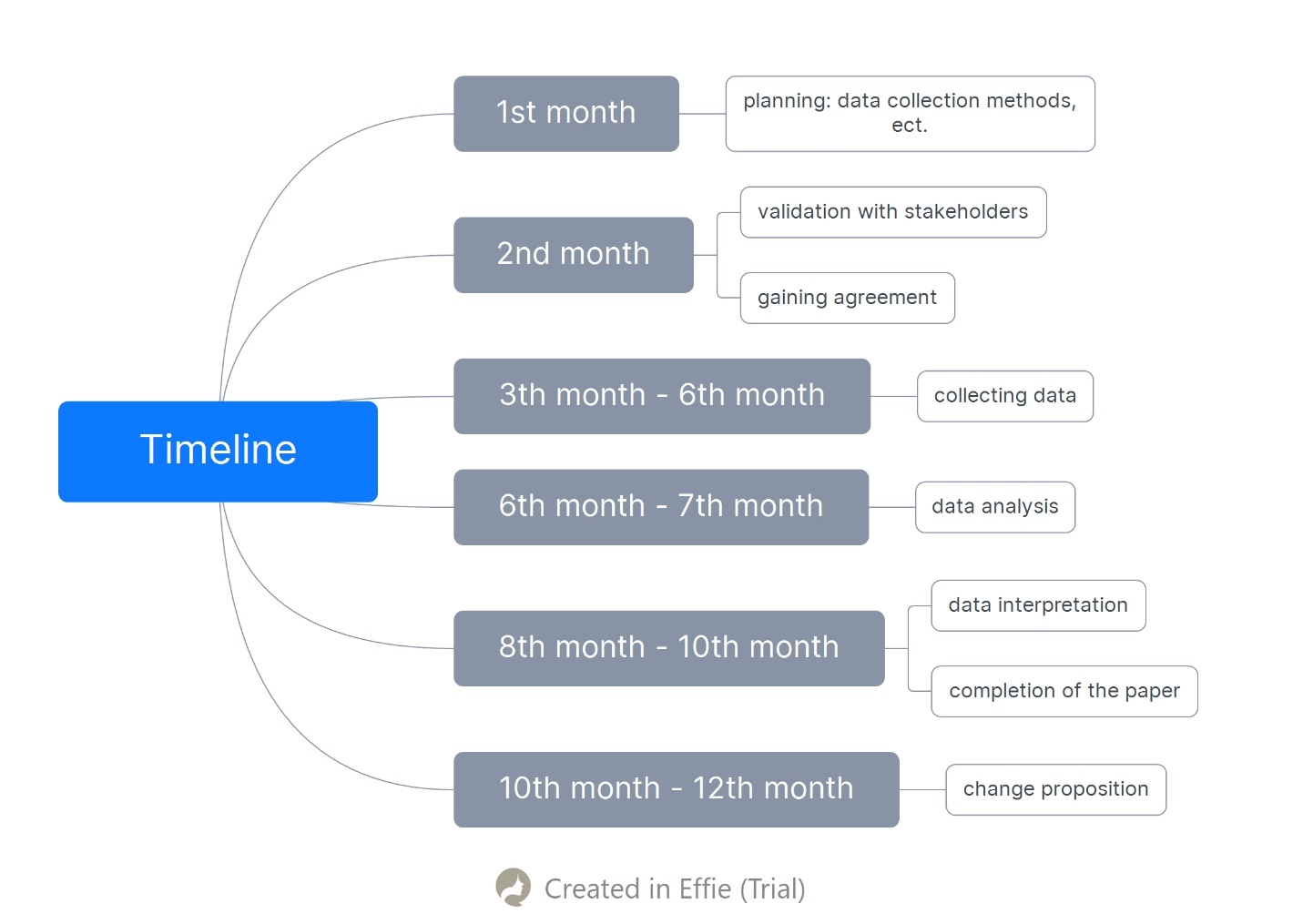Introduction
The research setting assumes inpatient working conditions, in which the study subjects, RNs, are operating for at least half a year. Inpatient nursing is medical care delivered to patients who need to be observed by RNs. Inpatient nurses frequently treat acute illnesses, severe diseases, or life-threatening injuries, which cause extreme stress among RNs (Powell et al., 2019). In turn, frequent stressful situations result in burnout in the research subjects (Ezenwaji et al., 2019). The study subjects include nursing staff in chosen inpatient care hospitals, which have been implementing mindfulness training for six months. Moreover, the study will compare the answers of the subjects from the first group with statistics for burnout in inpatient care hospitals that have not implemented mindfulness training. Access to the interviews with the subjects could be gained through agreement with the chosen hospitals’ administrators.
Discussion
The timeline for the proposed research includes several stages. Since the literature review, problem statement, and resources assessment have already been conducted, the next step is to develop the data collection strategy in one month, as well as validate the project with stakeholders. In the next month, the research team should establish an agreement with the chosen hospital administrators, after which the data collection process begins and ends in three months. Furthermore, the data analysis is conducted in two months, after which the researchers review and organize information, write and revise the paper, and compile the bibliography. Finally, it should be determined whether the change concerning mindfulness training is feasible and deliver the results to the stakeholders. As a result, the overall process takes one year to complete.
The resources needed for the research and the further assessment of change feasibility include human ones, such as salaries and wages, as well as materials and supplies, travel, and computer-related expenses. The budget drafting for the probable costs of the mentioned categories is included in Appendix B. A qualitative design could be proposed to collect data and evaluate the project’s effectiveness. The rationale for employing quantitative research is rigorously gathering and analyzing quantifiable data (Siedlecki, 2020). Quantitative analysis generates objective facts that may be expressed concisely using statistics and figures (Bloomfield & Fisher, 2019). The method to be used for monitoring the implementation of the proposed project is a questionnaire. The questionnaire, included in Appendix C, is to be provided to project academic participants monthly; each person should highlight one answer to the question.
Conclusion
To deliver the intervention, the researchers should investigate the study’s results and assess the costs and benefits of change, which requires training in data analysis and communication with stakeholders. The stakeholders needed to implement the plan are nursing universities, hospital administrators, and mindful training consultants. The potential barriers to the implementation plan include a lack of funding. The strategies to overcome this challenge include gaining governmental or nursing association funding (Melnyk & Morrison-Beedy, 2019). The plan’s feasibility could be claimed to be medium due to economic factors.
References
Bloomfield, J., & Fisher, M. (2019). Quantitative research design. Journal of the Australasian Rehabilitation Nurses’ Association, 22(2), 27–30. Web.
Ezenwaji, I. O., Eseadi, C., Okide, C. C., Nwosu, N. C., Ugwoke, S. C., Ololo, K. O., Oforka, T. O., & Oboegbulem, A. I. (2019). Work-related stress, burnout, and related sociodemographic factors among nurses. Medicine, 98(3), e13889. Web.
Melnyk, B. M., & Morrison-Beedy, D. (2019). Intervention research and Evidence-Based quality improvement. Springer Publishing.
Powell, M. J., Froggatt, K., & Giga, S. (2019). Resilience in inpatient palliative care nursing: A qualitative systematic review. BMJ Supportive & Palliative Care, 10(1), 79–90. Web.
Siedlecki, S. L. (2020). Understanding descriptive research designs and methods. Clinical Nurse Specialist, 34(1), 8–12. Web.
Appendix A

Appendix B
Figure 2. The budget for one year
Appendix C
Figure 3. The questionnaire